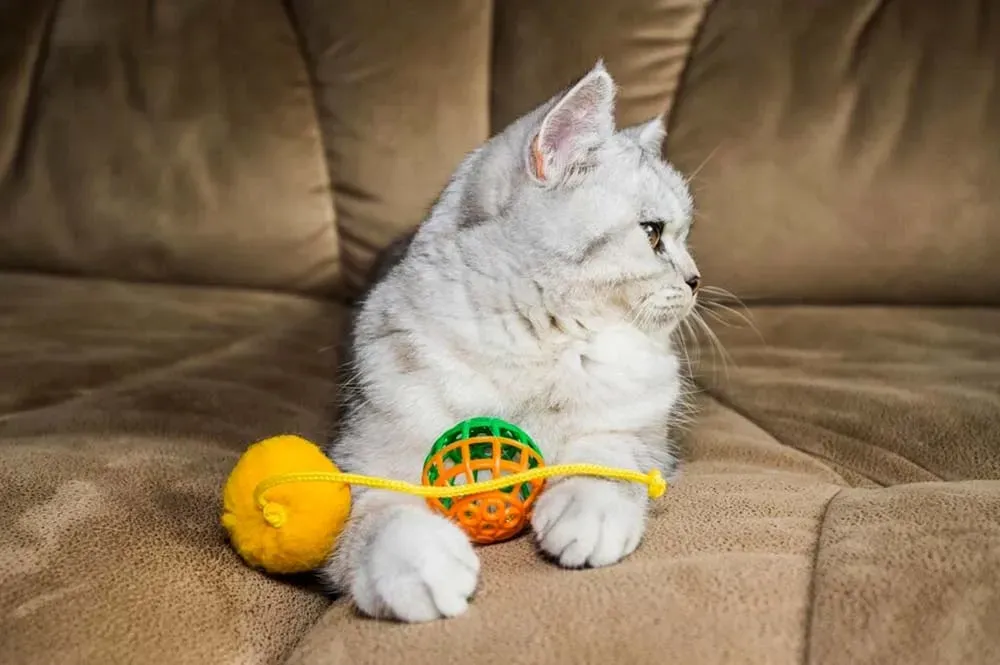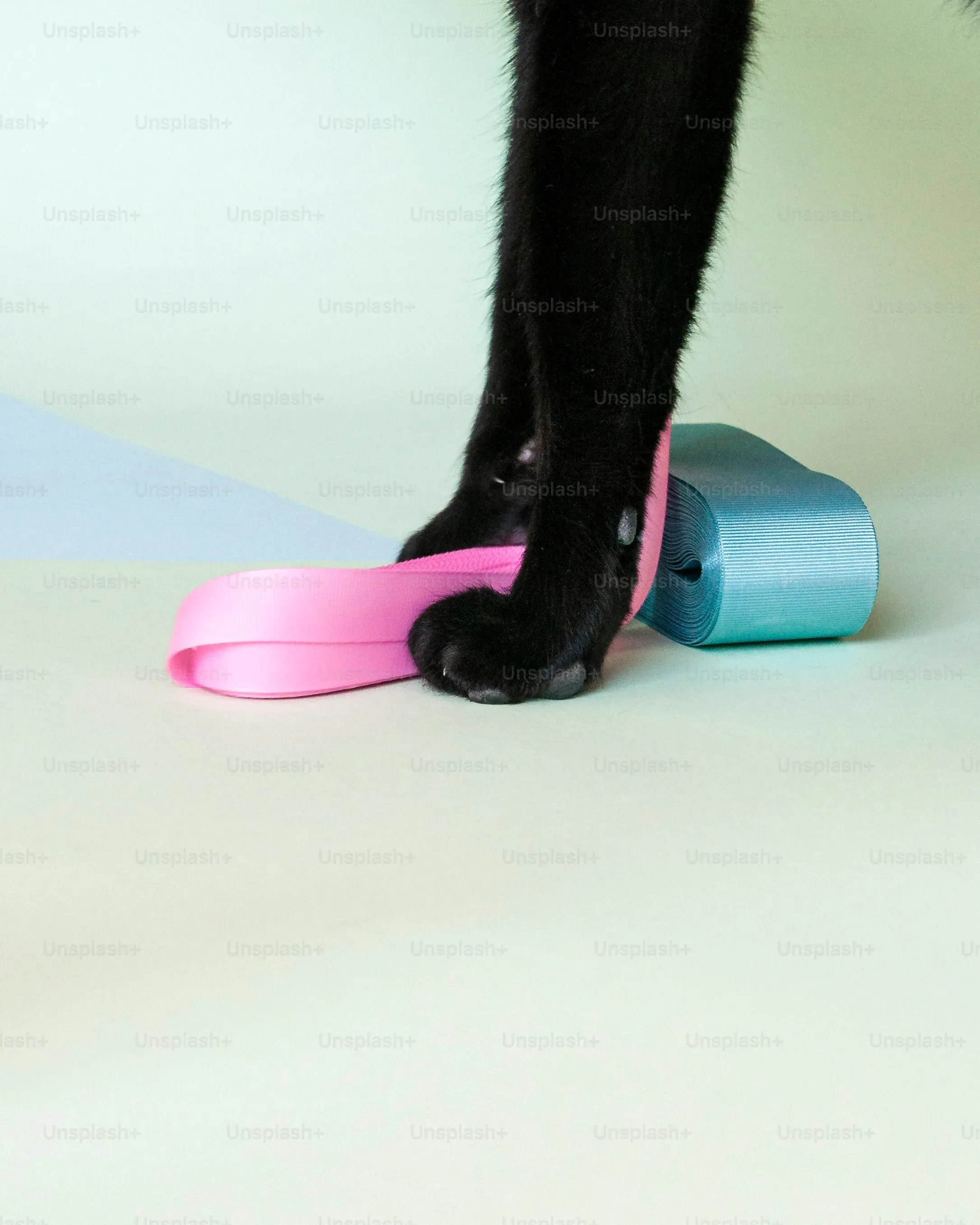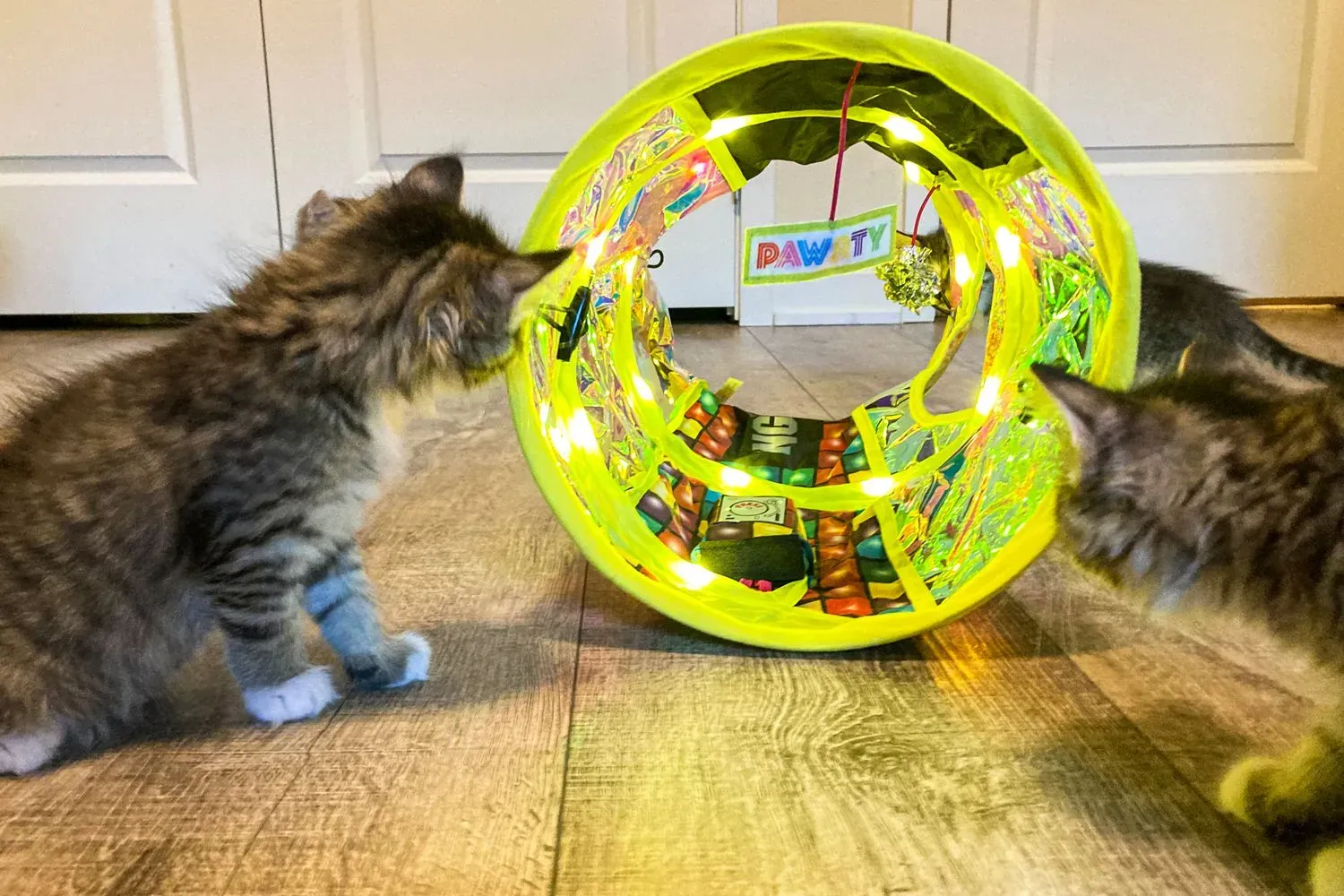Table of Contents
Leaving your cat home alone can feel a bit like leaving a toddler with a box of crayons and a blank wall. You hope for the best, but you half expect chaos. Boredom is a real issue for solo felines. It doesn't just lead to shredded furniture or midnight zoomies that sound like a stampede; it can genuinely impact their well-being.
Why Your Cat Needs Playtime When You're Out

Why Your Cat Needs Playtime When You're Out
Boredom Isn't Just Annoying, It's a Problem
Think about being stuck in the same room all day with nothing to do. No internet, no books, no one to talk to. Sounds pretty grim, right? That's kind of how your cat feels when you leave for work or errands. While they might sleep a good chunk of the day, their natural instincts – hunting, exploring, stalking – don't just vanish because you're not there. They need mental and physical stimulation, even when flying solo. Ignoring this fundamental need isn't just about preventing shredded couches; it's about their overall health. A bored cat is a stressed cat, and stress manifests in ways you really don't want to deal with, like overgrooming, changes in appetite, or even litter box issues. Providing playtime when you're out is less about spoiling them and more about preventing problems down the line.
Unleashing the Inner Predator (Safely)
Cats are hardwired hunters. Even the most pampered house panther has that ancient programming running in the background. They need to chase, pounce, and "kill" something. Without an outlet for these behaviors while you're away, they'll find their own targets – often your expensive drapes or the leg of the dining room table. Playtime, especially with toys designed for solo engagement, allows them to exercise these instincts in a constructive way. It burns off excess energy that might otherwise fuel destructive behavior and provides a sense of accomplishment. It's not just cute when they "catch" a toy mouse; it's fulfilling a biological drive that keeps them balanced.
What happens when that instinct is suppressed while they're home alone?
- Increased anxiety or stress
- Destructive scratching or chewing
- Excessive vocalization
- Changes in eating habits
- Acting out for attention when you return
What Makes the Best Cat Toy for Home Alone Cats?

What Makes the Best Cat Toy for Home Alone Cats?
It Needs to Be More Than Just a Ball of Yarn
so you're looking for the **best cat toy for home alone cats**. What does that even mean? It's not just about tossing them something shiny and hoping for the best. A toy that works when you're not there has to do a few key things. First, it needs to hold their attention without your direct involvement. That means it can't rely on you flicking a wand or throwing a mouse. It needs some level of self-sufficiency, something that moves unpredictably or rewards interaction. Think about what captivates a cat – movement, sound, texture, the thrill of the chase. The toy needs to tap into those instincts even when the primary hunter (you) is out.
Safety and Durability Aren't Optional
This might sound obvious, but it's worth repeating. The **best cat toy for home alone cats** is one that won't turn into a vet visit while you're away. Look for toys made from non-toxic materials. Avoid anything with small parts that can be chewed off and swallowed – bells, plastic eyes, feathers that detach easily. Durability is also crucial. A toy that falls apart after five minutes isn't just a waste of money; it can become a choking hazard. If your cat is a power chewer, you need something robust. Check reviews, feel the material, and use your best judgment. A good rule of thumb: if you wouldn't give it to a unsupervised toddler, maybe rethink giving it to your unsupervised cat.
What to look for in a safe, durable solo toy:
- Made from non-toxic materials
- No small, easily detachable parts
- Sturdy construction
- Appropriate size for your cat
- Easy to clean
Engagement That Lasts More Than Five Minutes
Let's be real, cats have the attention span of a gnat sometimes. The challenge in finding the **best cat toy for home alone cats** is finding something that maintains intrigue. This is where puzzle toys and interactive feeders shine. They require your cat to think and work for a reward (usually treats or kibble), which provides mental stimulation and extends playtime significantly. Toys that mimic prey behavior – erratic movements, hidden elements – can also keep them hooked longer than a static object. Variety is also key. Don't just give them one toy; rotate them to keep things feeling fresh and exciting.
Top Types: Finding the Best Cat Toy for Home Alone Cats

Top Types: Finding the Best Cat Toy for Home Alone Cats
Exploring Effective Toy Categories for Solo Play
Alright, so you understand *why* your cat needs solo entertainment and what makes a toy safe and potentially engaging. Now, what kind of contraptions actually fit the bill for the **best cat toy for home alone cats**? We're not just talking about rolling a felt mouse across the floor before you leave. The toys that truly work when you're absent fall into a few key categories designed to tap into different feline instincts. Think puzzle feeders that make them work for treats, electronic toys that mimic unpredictable prey movement without needing a human operator, or even simple elevated tracks with balls that provide visual stimulation and batting practice. Each type offers a different kind of engagement, aiming to keep their brains busy and their paws active while you're out earning the kibble money.
Specific Picks: The Best Cat Toy for Home Alone Cats Right Now

Specific Picks: The Best Cat Toy for Home Alone Cats Right Now
Real Contenders for Solo Play Success
so you know the *types* of toys that *should* work, but let's get down to brass tacks. What are people actually using? What's getting some traction as potentially the **best cat toy for home alone cats**? It's not a one-size-fits-all answer, of course, because cats are finicky creatures with highly specific, often baffling, preferences. But generally, you're looking at things that move on their own, dispense treats, or offer complex textures and sounds. Think automatic laser pointers that sweep random patterns (with supervision, of course, so they don't just stare at a dot forever and get frustrated), or treat balls they have to bat around to get kibble out. Electronic flopping fish toys have had their moment, though some cats are terrified and others bore of them quickly. Interactive puzzle boards where they have to slide pieces to uncover food are also popular contenders, offering a good mental workout that tires them out just as effectively as physical play.
Getting the Most Out of Your Cat's Solo Playtime

Getting the Most Out of Your Cat's Solo Playtime
Making the First Impression Count
so you’ve done your research, you’ve wrestled with options that promise feline nirvana while you're at work, and you've potentially found something claiming to be the **best cat toy for home alone cats**. Don't just plop it on the floor and expect magic. Cats are suspicious creatures. A new object appearing out of nowhere can be terrifying or simply boring. The introduction matters. Play with the toy yourself first, make it seem exciting. Let your cat watch you. Then, introduce it during a time when your cat is already active and playful. Maybe tie it into their feeding routine, putting a puzzle feeder down just before you leave. The goal is to associate the toy with positive experiences, not just abandonment.
The Sacred Art of Toy Rotation
Think about your own Netflix queue. You don't watch the same show forever, right? Cats are similar. Even the **best cat toy for home alone cats** will lose its appeal if it's available 24/7. The key to long-term engagement is novelty. Don't leave all the solo toys out at once. Have a selection, maybe three or four, that you rotate every few days or once a week. When a toy reappears after being "away," it feels new and exciting again. It triggers that hunter's curiosity. This simple trick can breathe new life into forgotten favorites and keep your cat guessing, in a good way.
Tips for effective toy rotation:
- Designate a storage spot for "retired" toys.
- Rotate toys every 3-7 days.
- Introduce one or two "new" old toys at a time.
- Observe which types get the most attention after rotation.
- Clean toys regularly before putting them back in the rotation.
Listen to What Your Cat Tells You
Despite what the marketing photos show, not every cat will adore every toy. Your cat is an individual with specific preferences, however bizarre they might seem. Pay attention to how they interact, or don't interact, with the toys you provide. Do they bat at the electronic mouse for five seconds and then ignore it? Do they spend hours trying to get the last kibble out of the puzzle feeder? Do they seem genuinely frustrated or scared by a certain type of movement or sound? Their reactions are your best guide. Don't force a toy they dislike. Catalog what works and what doesn't, and tailor your selection. Finding the true **best cat toy for home alone cats** for *your* particular feline often involves trial and error, and paying close attention to the feedback they give you through their behavior.
Wrapping Up: Finding the Best Cat Toy for Home Alone Cats
So, there you have it. Keeping your cat engaged when you're not around isn't just about preventing them from redecorating your living room with their claws; it's about providing crucial mental stimulation. The quest for the **best cat toy for home alone cats** isn't a one-and-done deal. What captivates one cat might be ignored by another, and even a favorite can lose its charm over time. It requires observation, a bit of trial and error, and perhaps a willingness to accept that sometimes, the empty box the fancy toy came in is the real winner. Providing options that encourage their natural instincts – stalking, pouncing, problem-solving – is the goal. It might not always be perfect, but a little effort in finding the right solo playthings goes a long way in keeping your feline companion less bored and, hopefully, less inclined to plot your demise via tripping hazard.